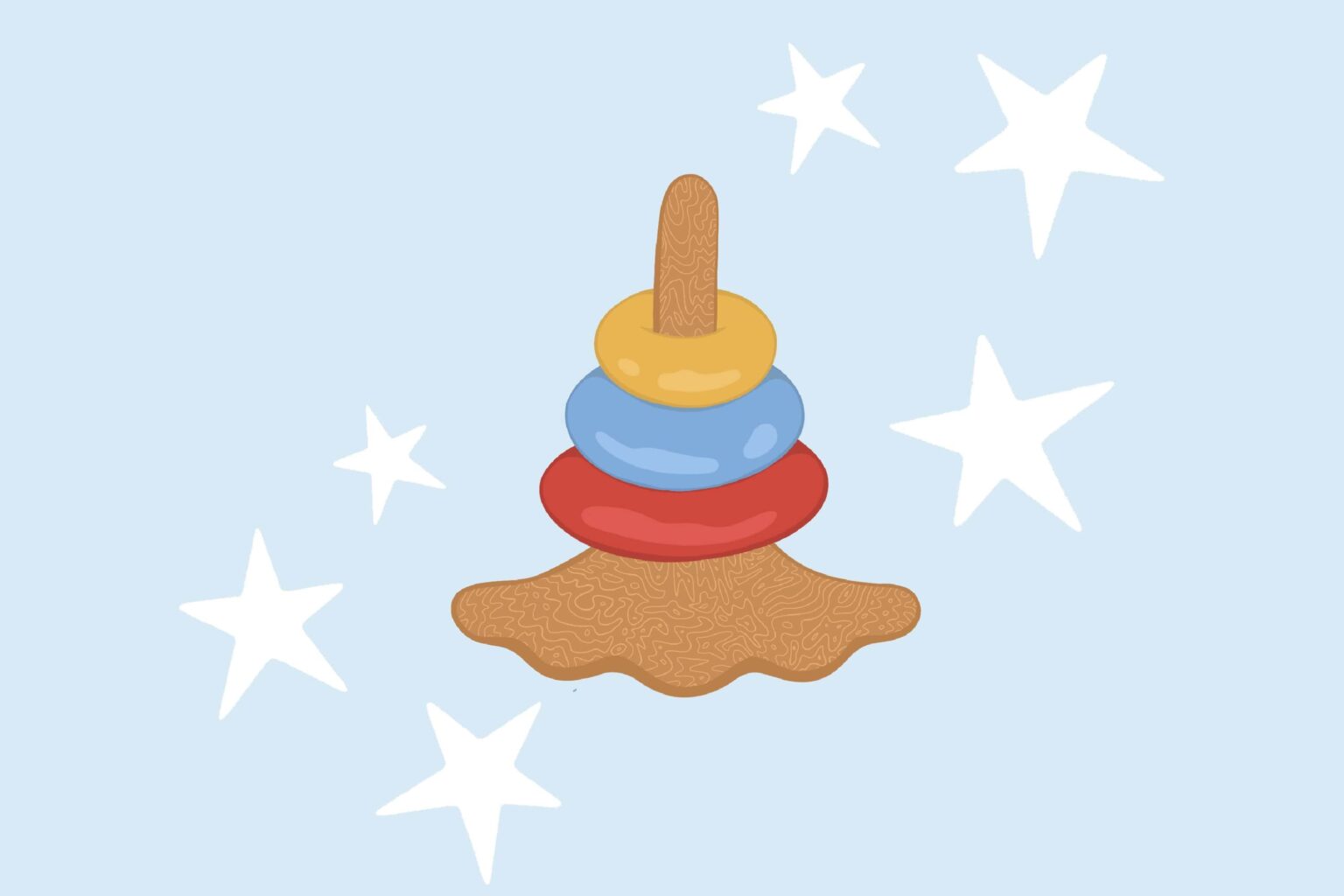Baby Development: Your 7 Month, 1 Week Old

Your 7 month, 1 week old baby is likely discovering one of the great joys of childhood: toys. At this age, your baby can likely transfer objects from one hand to the other, sit without the support of his or her hands, and find objects that are partially hidden or just out of reach all skills that he or she will use (and improve) during playtime.
When it comes to toys and games, most babies this age prefer simple repetition. This could mean playing with the same toy over and over to the same result — and loving every minute of it. Although adults may get bored without a little variety, don’t be surprised if your little one fixates on one toy or game at first.
Toys: the good
The good news about this age is that babies love to play with most objects, even common household items like a plastic bowl, measuring cups, small pots, and wooden spoons. Just ensure these utensils are lightweight enough for your baby to pick up and that the items could not fall on your baby or cause any harm.
Babies also love blocks, like wood or soft blocks. You may have to do some demonstrating on how to stack and knock down the blocks, but they can provide a fun, interactive experience. Lightweight balls are also very fun for baby. Just keep in mind that your baby will also love to throw the ball and have you retrieve it!
Your baby will also enjoy musical toys as well as things he or she can push around, like cars and dump trucks.
Toys: the bad
A popular option to make baby’s crib even more fun are “activity centers” that attach to a crib rail for baby to play. When babies are newborns, it’s not a good idea to have any toys in the crib, but as they age, it’s OK to include toys like mirrors and other play items that strap securely to the crib rail. Still, always exercise caution when introducing anything to the sleep environment. There should be no small parts or no dangling strings.
Many children this age also become attached to dolls or plush stuffed animals, but it’s important to make a few considerations before purchasing one for your child. These include:
Does not have plastic eyes, ribbons, or anything that can be pulled off and that your child could choke on.
Small enough so your baby can easily pick it up.
Wearing clothing that is labeled flame-resistant or flame-retardant.
In general, you should stick with toys that are age-appropriate and do not include small parts.
Many parents at this age also wonder if it’s OK to expose their babies to screen-based entertainment, like educational apps or videos. It’s good to know that there is no evidence that educational videos actually teach anything. So, from a developmental point of view, there’s no reason to buy educational videos. The American Academy of Pediatrics currently recommends that children under 18 months of age should only be allowed access to screens while video chatting with family or familiar faces. Otherwise, children this age should have no screen time.
Toys: the ugly
You’ll likely notice something immediately: your baby doesn’t just use his or her hands to play. If it can be picked up, it can be licked, chewed, or bitten. Aside from the obvious safety considerations (e.g., no small pieces to reduce the risk of choking), you might wonder if having oral contact with all those toys raises the risk of your baby getting sick.
While cleanliness is important, there’s no reason to worry too much about disease transmission. In fact, some exposure to environmental dirt and general contact with items can help build your baby’s immunity.
To ensure your baby won’t choke on his or her toys, you can purchase a choke tube at most toy stores. This mimics the size of your baby’s throat. If the toy or a part of the toy could fit in the tube, it’s definitely a no-go.
Don’t forget the books!
For your baby, books can be toys too. Cloth or “board” books made from hard cardboard are options that work well for your 7-month-old baby because he or she will love to handle them. While your baby can’t read yet, almost all babies enjoy reading with caregivers and will frequently grab for the pages. The great news is that reading to your children from a very young age is linked to improved reading and other educational benefits later on.
To learn more about encouraging healthy play habits, take a look at our Q&A with Bundoo Behavioral Health Specialist, Raquel Anderson.
Powered by Bundoo®










